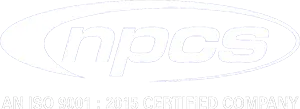Information
MDF, Medium Density Fiberboard (Interior-use Engineered Wood Panel Product, Manufactured from Wood Fibres) Manufacturing Plant, Profile, Business Plan, Industry Trends, Market Research, Survey, Manufacturing Process, Machinery, Raw Materials
MDF, Medium Density Fiberboard (Interior-use Engineered Wood Panel Product, Manufactured from Wood Fibres) Manufacturing Plant, Profile, Business Plan, Industry Trends, Market Research, Survey, Manufacturing Process, Machinery, Raw Materials, Feasibility Study, Investment Opportunities, Cost and Revenue, Plant Economics, Production Schedule, Working Capital Requirement, Plant Layout, Process Flow Sheet, Cost of Project, Projected Balance Sheets, Profitability Ratios, Break Even Analysis
Medium-density fibreboard (MDF) is an engineered wood product made by breaking down hardwood or softwood residuals into wood fibres, often in a defibrator, combining it with wax and a resin binder, and forming panels by applying high temperature and pressure. Medium density fibreboard is made basically the same way as particle board which is by gluing the fibres together with a resin and then compressing the board under heat, later the board is cut into appropriate lengths after it has dried.
Advantages:
- It is cost effective
- It's available in many sizes
- Has no natural defects
- Can be easily machined
MDF is reconstituted into wood sheets in a variety of widths and lengths. Bonding is achieved by the addition of synthetic resin adhesives, which are cured under heat and pressure. Paraffin wax is added to assist with water repellency, while other chemicals can be added during manufacturing for more specific protection.
Application
Medium Density Fiberboard (MDF) is widely used in the manufacturing of furniture, kitchen cabinets, door parts, mouldings, millwork and laminate flooring.
Common Uses:
• Doors, Jambs & Millwork
• Laminate Flooring
• Laminating & Finishing
• Moulding
• Office & Residential Furniture
• Kitchen Cabinets
Market Potential
MDF markets are now more mature, and price competitive, which has driven producers to improve quality and develop new products and markets. There has been significant change in ownership structure during the world economic downturn, and further changes can be expected.Producers, suppliers and traders will need to understand these changes to take advantage of the opportunities this presents for production, investment and trade, as the global economy recovers. High demand for medium density fibreboard (MDF) in the world market has led MDF manufacturers to increase their production capacity. This has resulted in an increased requirement for raw materials to fulfill the market demand.
MDF production
The MDF production process involves grinding wood chips into fibres and binding them with synthetic resin under heat and pressure. MDF is used mainly for the furniture industry, skirting boards, architraves, packaging material, in the door industry and in everything from book covers to shoes. The MDF production line mainly includes chipping, screening, refining, glue preparation, drying, mat forming, pre-pressing, loading & unloading, hot pressing, edge trimming & sanding. The process starts from the wood yard, designed to ensure continuous & un-interrupted supply of woods.
See more
Table of Contents
1. District Profile & Geotechnical Site Characterization
1.1. General
1.2. Physical Characteristics
1.3. Climate
1.4. Transportation and Communications
1.5. Map
1.6. Economy
1.7. Culture & Attitudes
2. Introduction
3. Advantages of MDF
3.1. Ecological Safety
3.2. Possible Form Alteration
3.3. Durability
3.4. Manufacturability
4. Physical Mechanical Characteristics
5. Properties
5.1. MDF Characteristics:
5.2. Product Standards and Certification
6. Uses & Applications
7. Market Survey
7.1. Boards and Plywood
7.2. Particle Boards
7.3. Market Structure
7.4. Leading Brands
8. Swot Analysis
8.1. Strengths:
8.2. Weakness:
8.3. Opportunity:
8.4. Threat:
9. Financials & Comparison of Major Indian Players/Companies
9.1. About Financial Statements of CMIE Database
9.2. Profits & Appropriations
9.3. Total Liabilities
9.4. Total Assets
9.5. Net Cash Flow from Operating Activities
9.6. Section – I
9.6.1.Name of Company with Contact Details
9.6.2.Name of Director(S)
9.6.3.Plant Capacity
9.6.4.Location of Plant
9.6.5.Capital Expenditure Projects
9.6.6.Name of Raw Material(S) Consumed With Quantity & Cost
9.7. Section – II
9.7.1.Income & Expenses
9.7.2.Profits
9.7.3.Forex Transaction
9.7.4.Liabilities
9.7.5.Assets
9.7.6.Growth in Assets & Liabilities
9.7.7.Growth in Income & Expenditure
9.7.8.Liquidity Ratios
9.7.9.Profitability Ratio
9.7.10.Return Ratios
9.7.11.Cost as % ge of sales
9.7.12.Working Capital & Turnover Ratios
9.7.13.Structure of Assets & Liabilities(%)
9.7.14.Cash Flow
10. Raw Material
10.1.Raw Materials and Composition
11. Wood Base MDF Production Line Equipments & Raw Materials
11.1.Required Machinery Section
11.2.Required Raw Materials
12. Manufacturing Process
13. Flow Sheet Diagram
14. Environmental Concern
14.1.List of Pollution control equipment at various manufacturing stages:
15. Suppliers of Plant & Machinery
16. Suppliers of Raw Materials
17. Plant Layout
18. Product & Machinery Photographs
19. Quotation of Plant, Machinery and Equipments from Supplier
PROJECT FINANCIALS
· Project at a Glance
Annexure
· Assumptions for Profitability workings ….…………………………………………....................... 1
· Plant Economics…………………………………………………………………………….................... 2
· Production Schedule……………………………………………………………………….................... 3
· Land & Building…………………………………………………………………………….................... 4
§ Factory Land & Building
§ Site Development Expenses
· Plant & Machinery………………………………………………………………………….................... 5
§ Indigenous Machineries
§ Other Machineries (Miscellaneous, Laboratory etc.)
· Other Fixed Assets………………………………………………………………………….................... 6
§ Furniture & Fixtures
§ Pre-operative and Preliminary Expenses
§ Technical Knowhow
§ Provision of Contingencies
· Working Capital Requirement Per Month………………………………………………................. 7
§ Raw Material
§ Packing Material
§ Lab & ETP Chemical Cost
§ Consumable Store
· Overheads Required Per Month and Per Annum ……………………………………................. .8
§ Utilities & Overheads (Power, Water and Fuel Expenses etc.)
§ Royalty and Other Charges
§ Selling and Distribution Expenses
· Salary and Wages ……………………………………………………………………………................. 9
· Turnover Per Annum ………………………………………………………………………................ 10
· Share Capital…………………………………………………………………………………................ 11
§ Equity Capital
§ Preference Share Capital
• Annexure 1 :: Cost of Project and Means of Finance
• Annexure 2 :: Profitability and Net Cash Accruals
§ Revenue/Income/Realisation
§ Expenses/Cost of Products/Services/Items
§ Gross Profit
§ Financial Charges
§ Total Cost of Sales
§ Net Profit After Taxes
§ Net Cash Accruals
• Annexure 3 :: Assessment of Working Capital requirements
§ Current Assets
§ Gross Working Capital
§ Current Liabilities
§ Net Working Capital
§ Working Note for Calculation of Work-in-process
• Annexure 4 :: Sources and Disposition of Funds
• Annexure 5 :: Projected Balance Sheets
§ ROI (Average of Fixed Assets)
§ RONW (Average of Share Capital)
§ ROI (Average of Total Assets)
• Annexure 6 :: Profitability ratios
§ D.S.C.R
§ Earnings Per Share (EPS)
§ Debt Equity Ratio
• Annexure 7 :: Break-Even Analysis
§ Variable Cost & Expenses
§ Semi-Variable/Semi-Fixed Expenses
§ Profit Volume Ratio (PVR)
§ Fixed Expenses / Cost
§ B.E.P
• Annexure 8 to 11 :: Sensitivity Analysis-Price/Volume
§ Resultant N.P.B.T
§ Resultant D.S.C.R
§ Resultant PV Ratio
§ Resultant DER
§ Resultant ROI
§ Resultant BEP
• Annexure 12 :: Shareholding Pattern and Stake Status
§ Equity Capital
§ Preference Share Capital
• Annexure 13 :: Quantitative Details-Output/Sales/Stocks
§ Determined Capacity P.A of Products/Services
§ Achievable Efficiency/Yield % of Products/Services/Items
§ Net Usable Load/Capacity of Products/Services/Items
§ Expected Sales/ Revenue/ Income of Products/ Services/ Items
• Annexure 14 :: Product wise domestic Sales Realisation
• Annexure 15 :: Total Raw Material Cost
• Annexure 16 :: Raw Material Cost per unit
• Annexure 17 :: Total Lab & ETP Chemical Cost
• Annexure 18 :: Consumables, Store etc.
• Annexure 19 :: Packing Material Cost
• Annexure 20 :: Packing Material Cost Per Unit
• Annexure 21 :: Employees Expenses
• Annexure 22 :: Fuel Expenses
• Annexure 23 :: Power/Electricity Expenses
• Annexure 24 :: Royalty & Other Charges
• Annexure 25 :: Repairs & Maintenance Expenses
• Annexure 26 :: Other Manufacturing Expenses
• Annexure 27 :: Administration Expenses
• Annexure 28 :: Selling Expenses
• Annexure 29 :: Depreciation Charges – as per Books (Total)
• Annexure 30 :: Depreciation Charges – as per Books (P & M)
• Annexure 31 :: Depreciation Charges - as per IT Act WDV (Total)
• Annexure 32 :: Depreciation Charges - as per IT Act WDV (P & M)
• Annexure 33 :: Interest and Repayment - Term Loans
• Annexure 34 :: Tax on Profits
• Annexure 35 :: Projected Pay-Back Period And IRR
X
Have a business idea? Let’s make it
happen together-contact us now!




